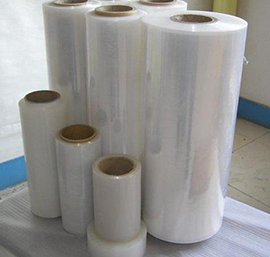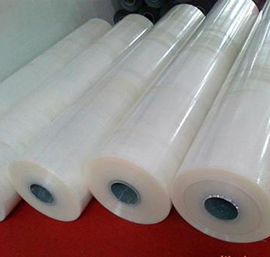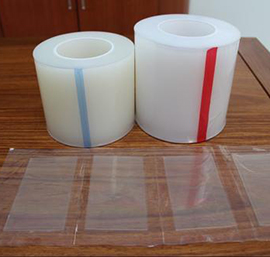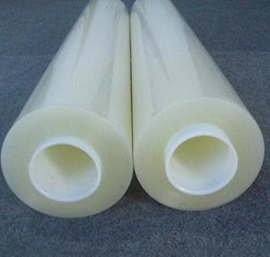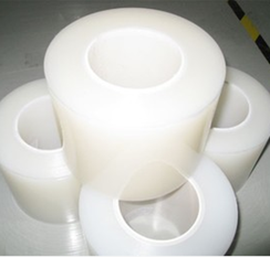How to identify different materials of protective film
发布日期:2021-04-27
There are many kinds of protective film, such as viscosity, thickness, material, etc. the viscosity and thickness of protective film need to be experienced. You can know it by touching it more, and the difference of material is also obvious.
In the world of protective film, experience is a valuable asset, and the wide variety of protective film often makes novices feel very troublesome. Today, Xiaobian told you about several common protective films. Let's learn together!
PP material
The protective film made of PP was the first to appear on the market. In fact, this material is the material of plastic bags we usually use. Its chemical name is polypropylene and has no adsorption capacity. It is a non-toxic and pollution-free environmental protection material, colorless, odorless, tasteless, non-toxic, good gloss, good film surface flatness, and has the characteristics of high tensile strength, impact strength, rigidity, strong toughness and good transparency, small crystal point, temperature and wear resistance.
Product use
01. It is mainly used for surface protection of hardware, plastics and electronics (such as mobile phone components, electronic components, etc.) and other industrial applications
02. As the LCD screen, the protection of mobile phone lens, computer shell, MP3 mirror, etc
PE material
PE is the most common protective film with soft texture. It takes special polyethylene (PE) plastic film as the base material. In the thousand level dust-free environment, the mixed glue is evenly coated on the PE film through high-precision coating production equipment. According to the requirements of different products, products with different thickness and viscosity can be produced.
PE protective film items are also divided into electrostatic film, Anilox film, etc. Electrostatic film is a kind of protective film without glue, which takes electrostatic adsorption force as the adhesive force. Of course, the viscosity is relatively weak. It is mainly used for surface protection such as electroplating. Anilox film is a protective film with many grids on the surface. This protective film has good air permeability and beautiful pasting effect. Unlike plain film, it will leave bubbles.
The biggest advantage of PE protective film is that the protected products are free from pollution, corrosion and scratch in the process of production, processing, transportation, storage and use, and protect the original bright and clean surface, so as to improve the quality and market competitiveness of products.
Product use
01. Hardware industry: computer casing, galvanized plate stamping, aluminum plate, stainless steel plate, titanium plate, plastic steel plate, glass plate, solar panel, etc
02. Optoelectronics industry: LCD, backlight, cold light film, membrane switch, mobile phone screen, etc
03. Plastic industry: ABS, PP injection molding products, PVC plates, acrylic plates, instruments, plastic lenses, surface protection of painted parts, etc
04. Printing industry: PVC, PC board, aluminum board, film and other printing inscription board surface protection, etc
05. Wire and cable industry: the protection of shaft mounted copper wire, semi-finished products, finished products and rolled finished products can effectively prevent dust pollution and have the effect of anti oxidation and anti fouling
06. Electronics industry: in production, it is generally necessary to protect the finished and semi-finished products, which are not easy to be scratched and damaged on the assembly line
07. Mobile phone digital industry: mobile phone film, also known as mobile phone beauty film and mobile phone protective film, is a kind of cold watch film that can be used to install the body and screen of mobile phone
PET material
Pet protective film is the most common protective sticker on the market. In fact, the plastic coke bottle we usually see is made of pet, also known as Baote bottle The chemical name is polyester film Pet protective film is characterized by hard texture, scratch resistance, good transparency and air resistance.
This kind of products have appropriate bonding strength and good retention performance to various pasted objects such as metal, plastic and glass; Low viscosity, smooth and flat surface of protective film; Good acid and alkali resistance.
Product use
01. Surface protection during product transportation, engineering protection of various lenses and screens
02. Protection of all kinds of plastic casing, keyboard and other plastic parts
03. Die cutting carrier, transfer and waste discharge of various films and tapes
Pu protective film
Pu protective film is a high-temperature protective film based on environment-friendly pet and coated with PU glue to make it have low adhesion, long-term bonding and no degumming after removal. It has the characteristics of high light transmittance, strong weather resistance, low adhesion, easy tearing, no residual glue, high temperature resistance and so on.
Product use
01. It is used for the protection of various panels, parts manufacturing process and shipment
02. It is suitable for ordinary glass, hardened glass, PMMA, PC and other materials. It can also be used for front and back protection of nito, with stable stripping force
PVC material
PVC protective paste is characterized by its soft texture and convenient pasting, but this material is relatively thick and has poor light transmittance, which makes the screen look hazy. After tearing it off, it will also leave a mark of glue on the screen. This material is also relatively easy to turn yellow and oil with the change of temperature, and its service life is relatively short. So now we can't see this kind of protective film on the market.
At present, what can be seen on the market is an improved version of PVC protective film, which solves the problems of previous massiness and poor light transmittance, but it is still unable to solve the problem of easy yellowing and oil, and it should be noted that PVC does not have scratch resistance.


